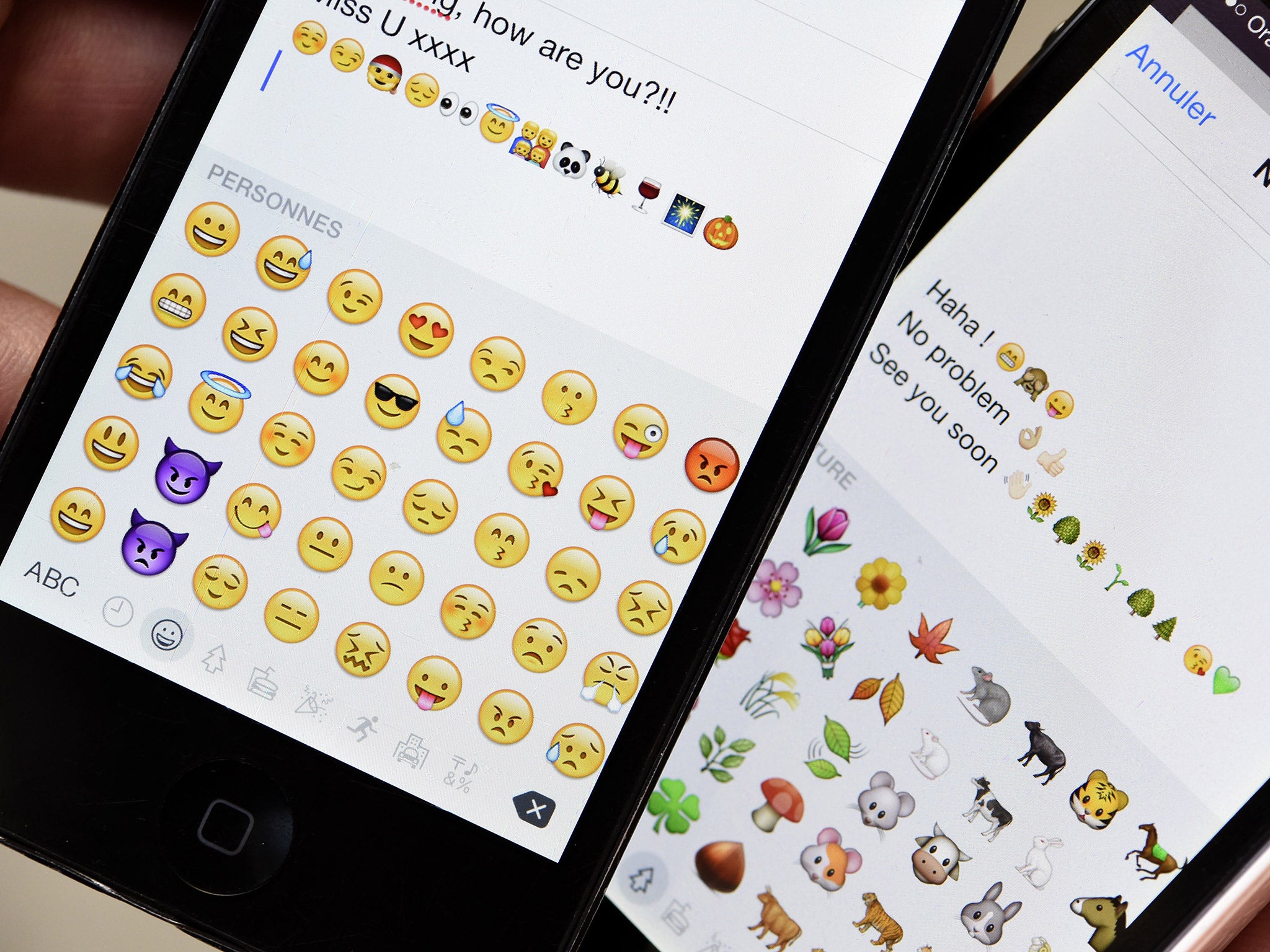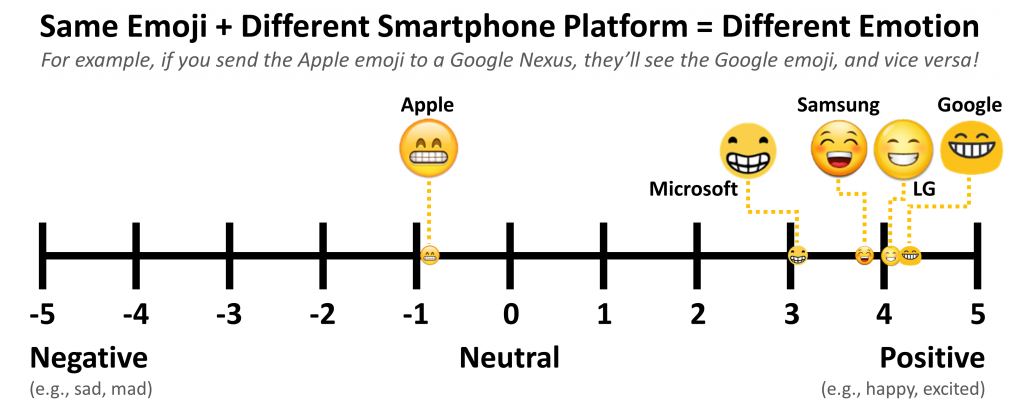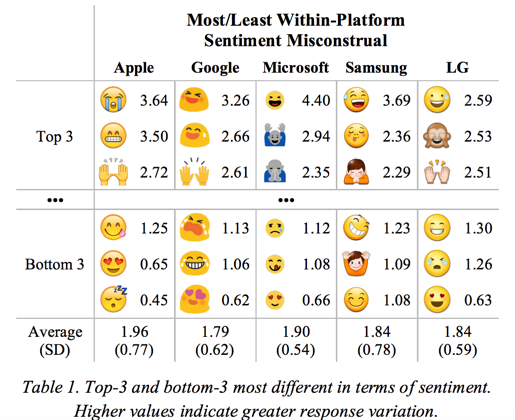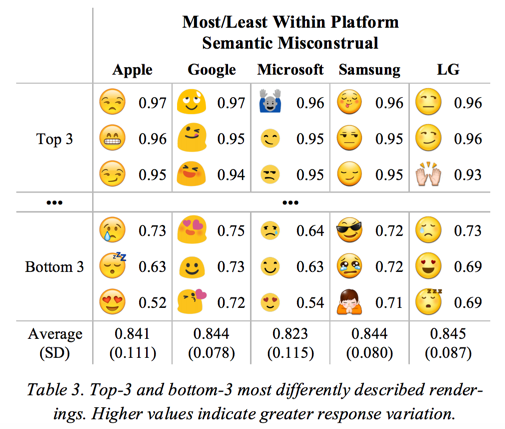The Independent's journalism is supported by our readers. When you purchase through links on our site, we may earn commission.
How reliably do people correctly interpret what others mean when they use emojis?
People interpret emojis differently through a survey done by 304 crowd workers in Amazon Mechanical Turk

As one of the authors on the paper mentioned by Andre, I hope to add a few findings from our research.
In summary, we do find that people interpret emojis differently through a survey done by 304 crowd workers in Amazon Mechanical Turk, potentially causing miscommunications.
The misunderstandings can happen in two cases: a) same emoji rendering in a mobile platform, e.g., one iPhone user send an emoji to another iPhone user, and b) different renderings of an emoji across mobile, e.g., one iPhone user send an emoji to an Android user, who sees different a rendering. Prior to our study, we expected to see different interpretations for the second case, because different renderings look so different (shown in the figure in Andre's answer). Much to our surprise, we find that even for the exactly same rendering there is significant disagreement for some emojis (see figure below).

To measure differences in interpretation, we ask survey respondents to both rate the sentiment of emojis on -5 (strongly negative) to +5 (strongly positive) scale and describe the meaning (semantics) of emojis in words. As you can see in the two tables below, different set of emojis show up in most sentimental and semantical confusing emoji ranking (in the case of same platform). Interestingly, the Apple emoji - “grinning face with smiling eyes" (official unicode description) shows up in top 3 in both rankings, hence we come up with the title of the paper - “Blissfully happy” or “ready to fight”.


Note that in our study we only focus on how people interpret emojis in isolation, in practice, however, people use emojis together with text, potentially mitigate the miss understandings. We are interested in studying this in our future work.
If you are interested in learning other results in the paper, I encourage to check out our blog post, paper and several news reports on our paper.
This answer comes from quora.com, the popular online Q&A service. Ask any question and get real answers from people in the know.
Join our commenting forum
Join thought-provoking conversations, follow other Independent readers and see their replies
Comments
Bookmark popover
Removed from bookmarks